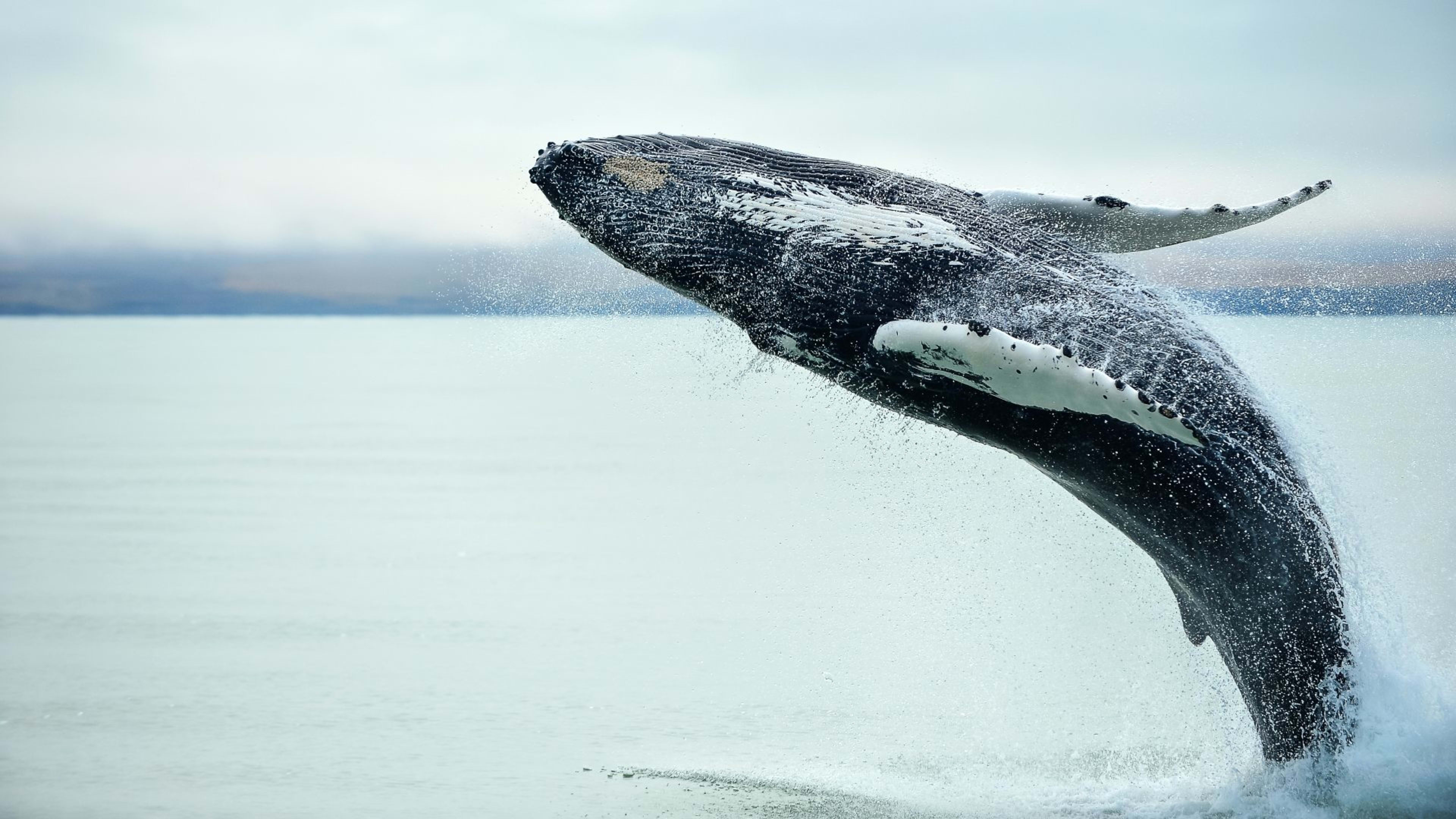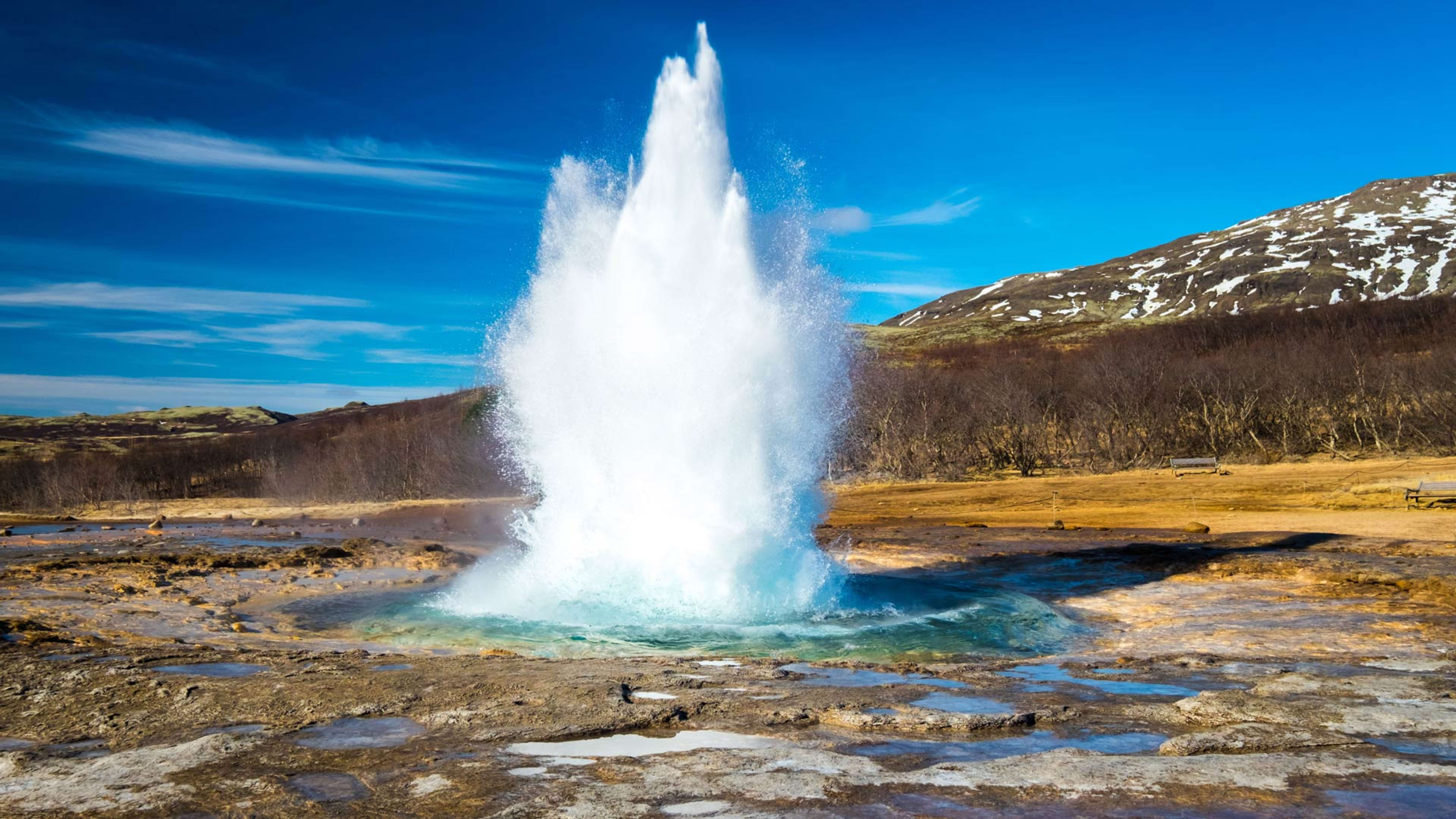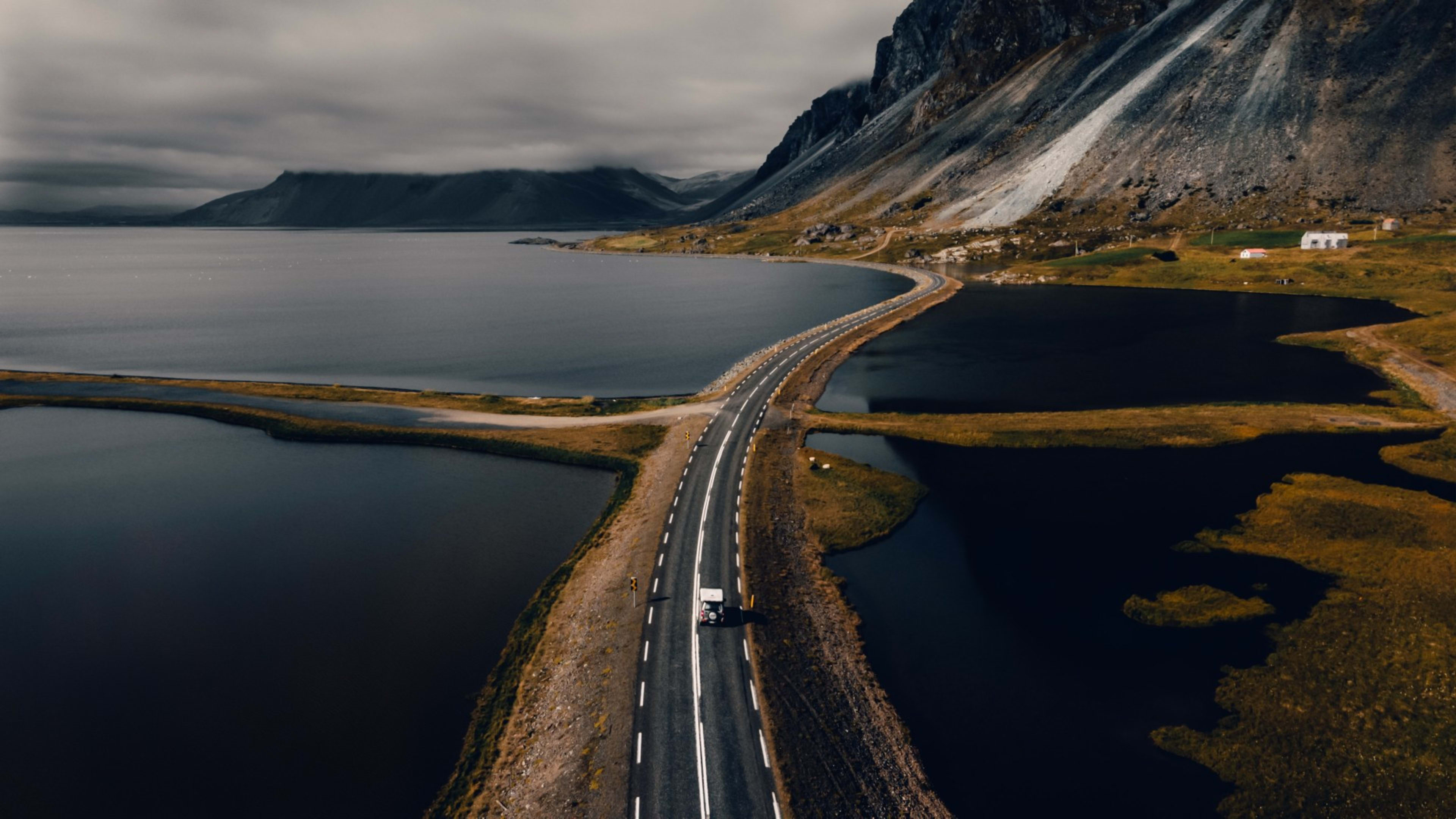Iceland has become, over the years, one of the best places in Europe for whale watching. If you’re keen on this activity, we are here to say “do it!” and recommend the best whale watching in Iceland.
The Icelandic waters are rich with wildlife, making it the ideal destination if you want to see whales, dolphins, seabirds, and more. It’s also good to know that tours are available all year long and are suited for the whole family.
Read below to learn what to expect of whale watching tours in Iceland, when to visit, and where to go for the best sightings.
- Browse our Iceland vacation packages to start planning your dream trip.
Fun facts about whales in Iceland
There is so much to learn about whales, as these gentle giants of the sea are truly fascinating. The bonus of whale watching tours is that you won’t just get to see whales but learn about them too. Often naturalists or marine biologists will act as guides on cruises.
Here is our little introduction to whales if you’re keen to have a head start:
First things first, whales are not fish, but cetaceans (aquatic mammals). This means they can’t actually breathe underwater. They have to surface depending on their lung capacity. Some whales can stay underwater for up to 2 hours.
There are 39 whale species recognized in our oceans. It goes up to 90 if you count porpoises and dolphins too. Whales are separated into two: baleen (with a filter system) and toothed (with teeth).
Come get acquainted with them even better on a whale watching tour!
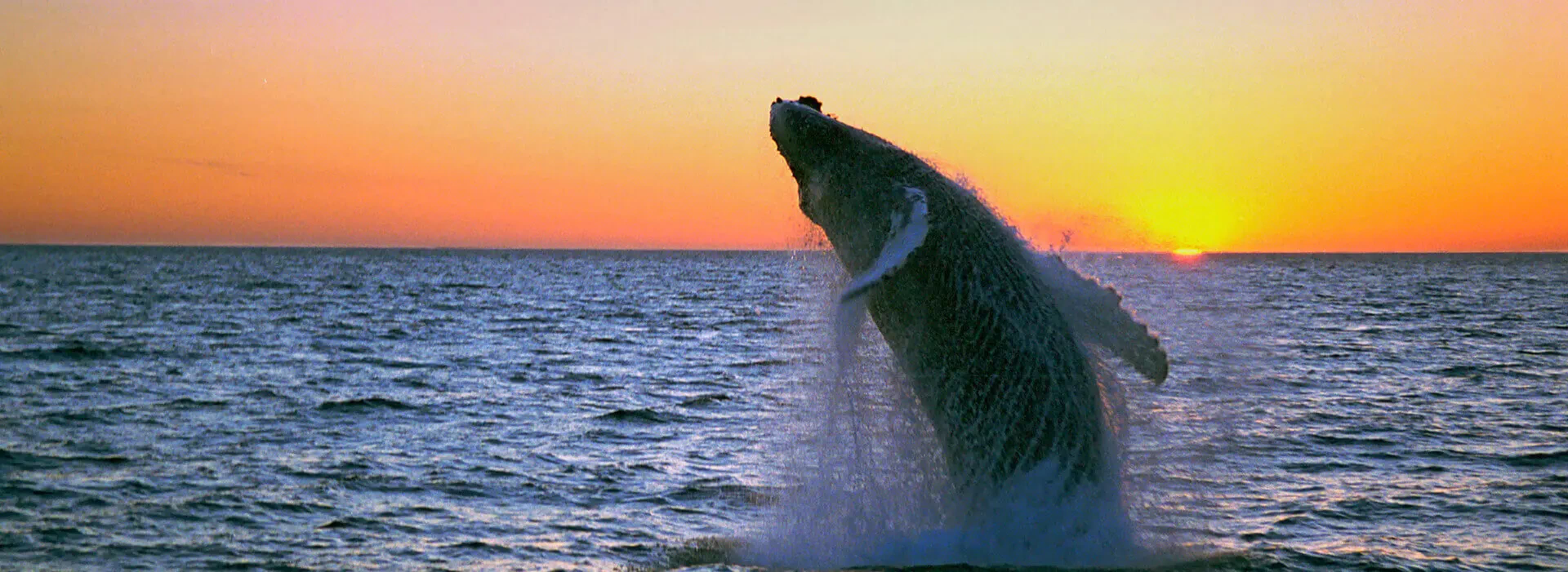
Whales you could see in Iceland
There is quite an array of whales that can be seen off Iceland’s shores all through the year. This is thanks to the cold Arctic Sea and warmer Northern Atlantic waters. They mix off the coast, thus creating the perfect habitat for small fish and squid, both prized by whales.
These are the ones you’re most likely to observe on your whale watching trip:
Minke whales are the most common because of their large numbers. But they are generally shy and may not approach boats. That said, they are around all year long.
Humpback whales can be found everywhere in the world, but Iceland is a great place to see them. They swim from warm tropical waters where they mate to the colder seas of the northern latitudes to feed in summer.
They breach more than any other baleen whale. So if you come across them on a tour, they should be easy to spot from the boat.
Sperm whales are the largest toothed whales in the world. On average they measure between 11 and 16 meters (36-52 feet), which is impressive. When and where are you most likely to see them? During spring or summertime off the west coast.
Bowhead whales are wide and swim slowly to conserve their energy in the polar waters of the Arctic Circle. Their name comes from the shape of their head, which they use to break through thick ice. You’ll likely find them off the coast of North Iceland.
Beluga whales are distinctly white, so you’ll probably recognize them right away. You may hear them as well. They are extremely vocal whales and were nicknamed the “canaries of the sea”.
You’re likely to spot belugas in the north of Iceland during the winter. This is because they migrate south when the ice starts to form in the Arctic.
Sightings of blue whales are rarer around Iceland, but they do happen. But as they are the world’s largest whales and mammals, we had to mention them. If you’re lucky enough to see one, you’ll have to tell us all about it!
While in Iceland, you may see the whales spy hopping. This is when they poke their head out of water. But maybe you’ll see them breaching (jumping) and playfully slapping their fins against the water. Making for even more dynamic photos!
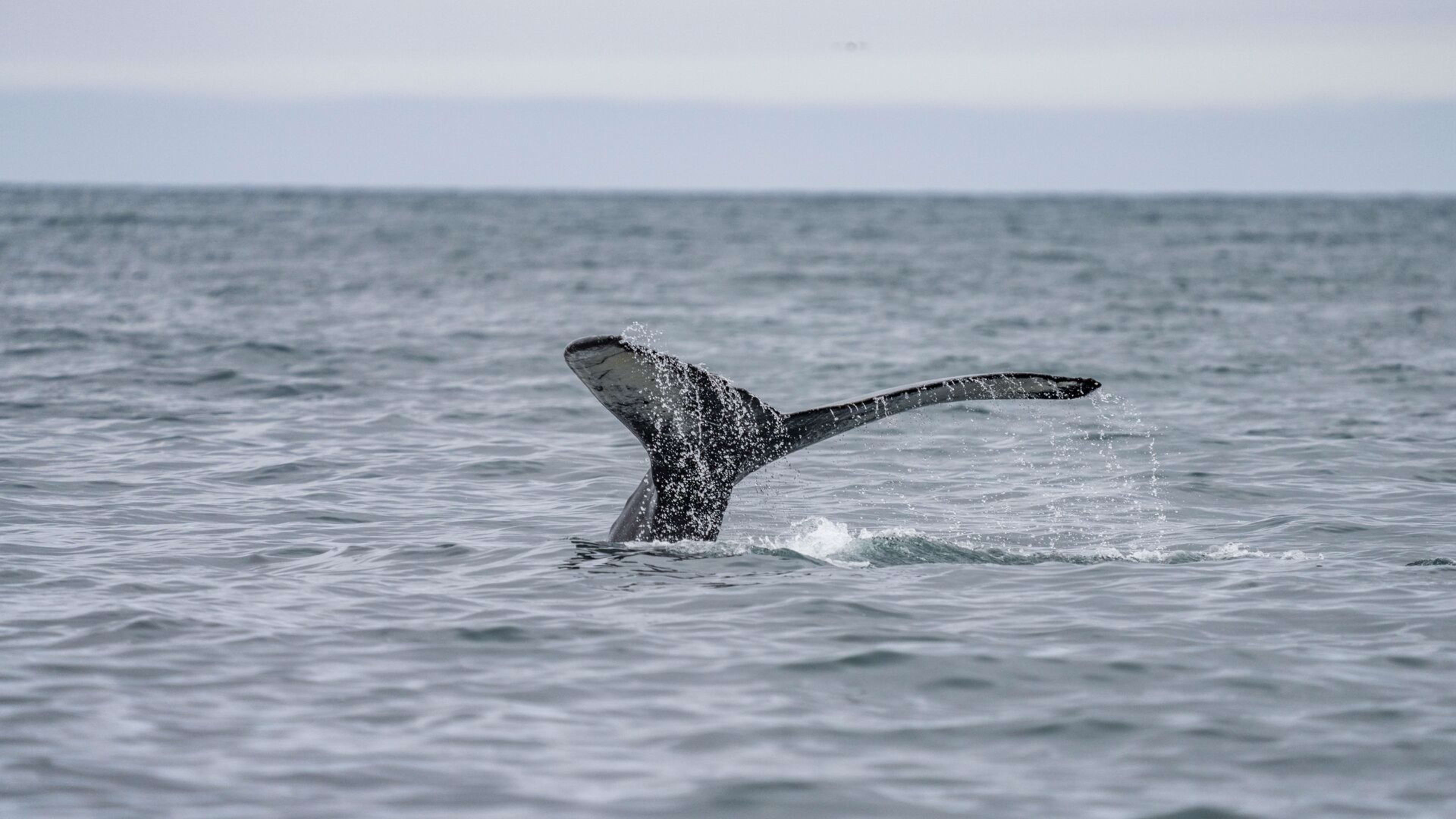
Other wildlife to watch out for during your boat tour
While you’re out at sea, keep your eyes open for more wildlife. The marine and birdlife are so rich, especially in the summer.
Dolphins can be spotted all year long, especially white-beaked dolphins. They will usually travel in pods, from a handful of them up to 100 dolphins. As they are powerful swimmers, you may see them bow-riding your vessel.
Harbor porpoises also live in the waters around Iceland all year long. They are shyer than dolphins, but you may catch them racing or feeding.
Orcas – wait, why are we including killer whales in the “other” category? Orcas are actually a type of dolphin, the largest species in fact. The best place to spot them is in West Iceland, like off the coast of the Snæfellsnes peninsula. Come in winter for your best chances of sightings.
You may also encounter many seals during your trip to Iceland. There are several colonies around the country. They often poke their heads out to spy on boats and people as they are curious creatures. Or you could visit the Icelandic Seal Centre in Hvammstangi in North Iceland.
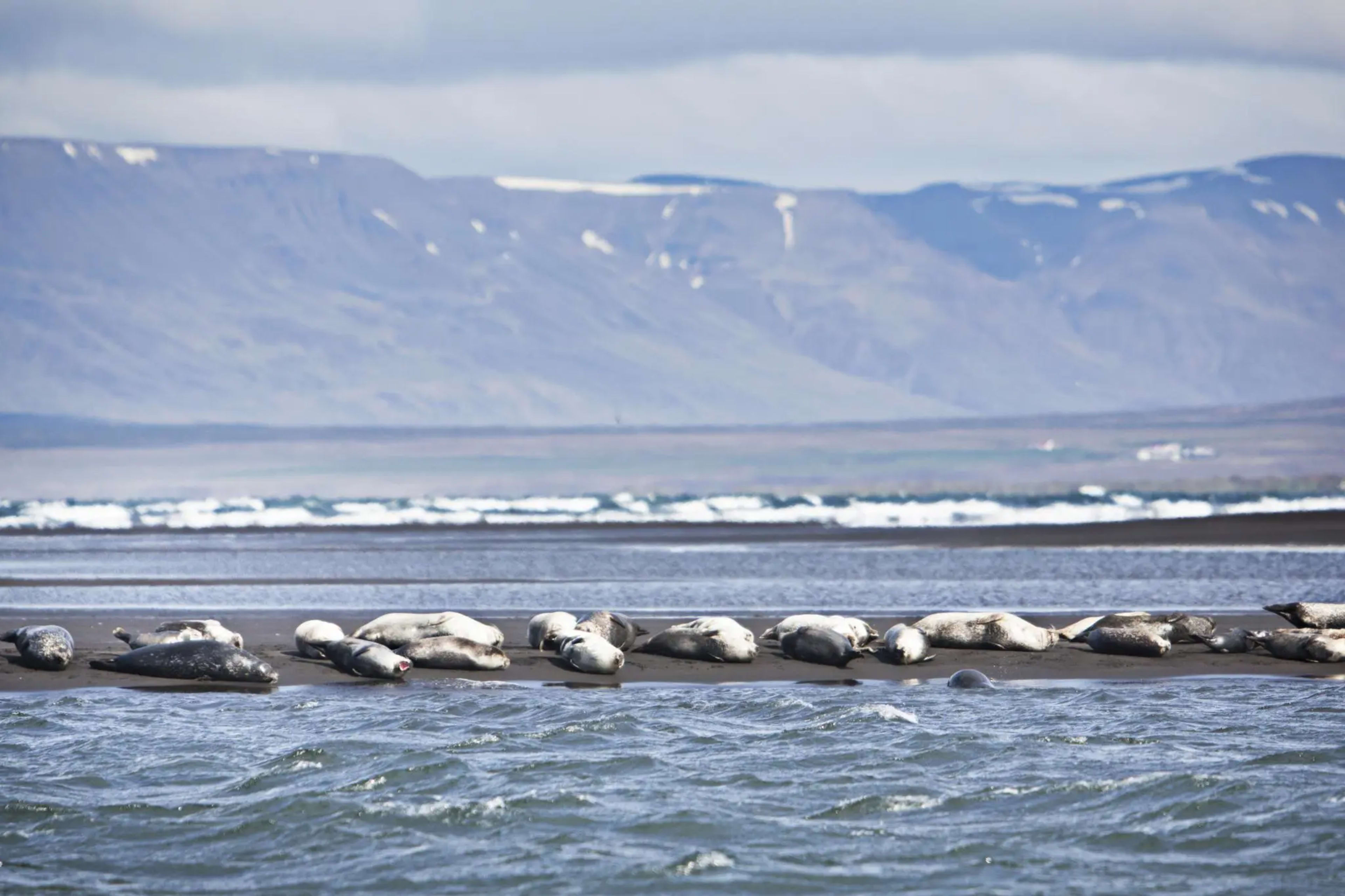
And finally, make sure to look up at the sky for seabirds. Puffins, Iceland’s unofficial bird, come in high numbers every summer to nest. Nearly 8 million of them! They start arriving in late April before going back to sea in August. The best place to witness them is in North Iceland and the Westfjords.
Keen birdwatchers should also keep an eye out for gannets, guillemots, razorbills, cormorants, gulls, kittiwakes, and more, depending on the time of year.
- View all the fun activities and day trips to add to your Iceland tour, including whale watching cruises.
Where to see whales in Iceland
Whales can be seen around the island, but there are prime locations you’ll want to visit for specific day tours. These include Reykjavík, the capital city in the south-west, and Húsavík, in North Iceland.
They both have their advantages, but your decision may come down to your itinerary. Reykjavík is perfect if you’re in town for a city break. Húsavík is an ideal stop along the way if you’re driving the Ring Road.
Whale watching from Reykjavík
As the first port of call on most trips to Iceland, Reykjavík is the most accessible location to watch whales. Even if you only stay in Iceland for a long weekend, you should still have time to add this tour to your itinerary.
The cruises usually leave from the old harbor, located a 10-minute walk away from the city center. Lasting around 3 hours, you’ll then travel through the Faxaflói Bay in search of marine wildlife.
The most common species encountered on these tours are humpback whales, minke whales, white-beaked dolphins, and harbor porpoises.
- Learn more about whale watching from Reykjavík.
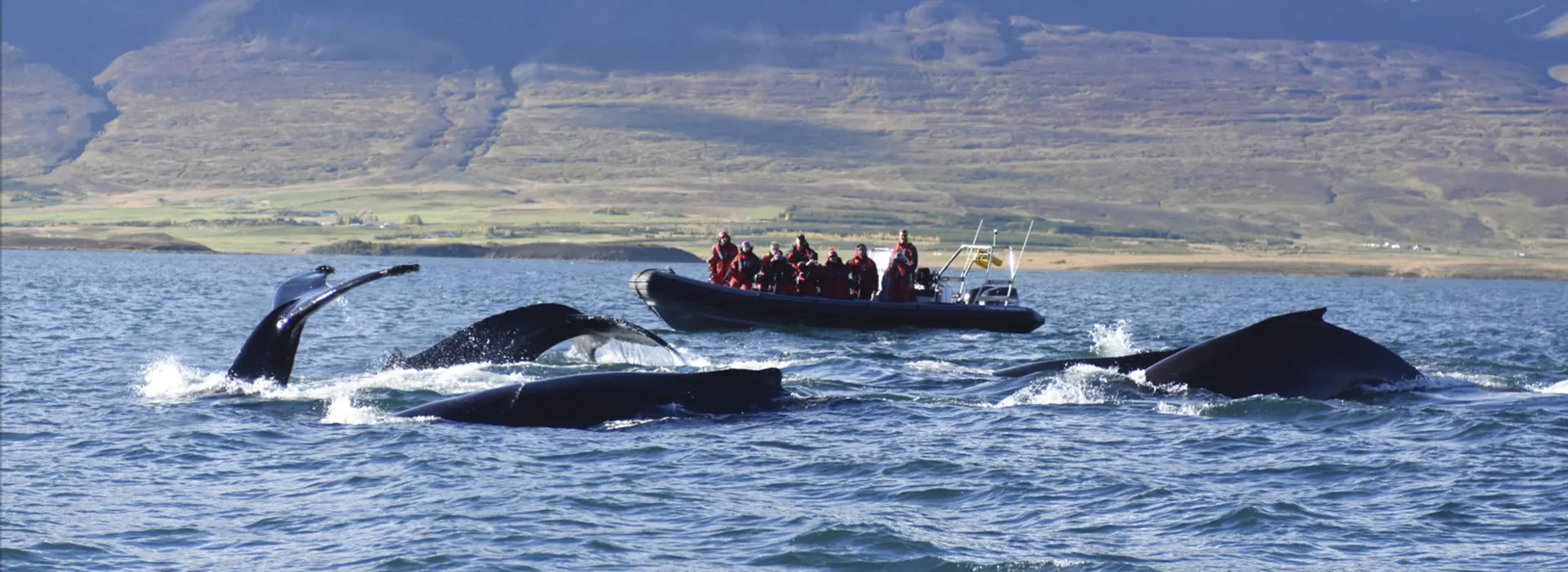
Whale watching from Húsavík
Húsavík is the most famous whale watching port of Iceland. Over the years it also transformed from a quiet fishing village to the “whale watching capital of Iceland”.
It owes this reputation to the thriving ecosystem of the Skjálfandi bay. Because of its shape, the bay draws in a lot of “food” turning into a feast for whales. It is the ideal location for them to dive deep to hunt and feed.
This makes Húsavík the best place for spotting whales in their natural habitat. In fact, most summer tours record a 100% sighting rate.
- Find your ideal Icelandic self-drive tour.
- Learn more about whale watching from Húsavík.
When to go whale watching in Iceland
Whale watching is an activity you could do at any point of the year. So whenever you are planning your trip to Iceland, you could book this excursion.
But if you want to visit Iceland just for the whales, you may want to keep a few things in mind.
Summer vs winter tours
Summertime is probably, by most people’s standards, the best time to come to Iceland to whale watch. Summer excursions have 2 major benefits: the weather and a greater number of whales.
Because the weather is more stable, there are fewer chances of storms and better prospects of clear skies. This is great if you want to spend more time on the deck as it’ll be more comfortable.
At this time of year, you also have longer days thanks to the midnight sun. And you’ll enjoy plenty of other activities and attractions, like dipping in hot springs and hiking.
- Check out summer tours of Iceland.
- Blog: Iceland in summer – must sees and must dos.
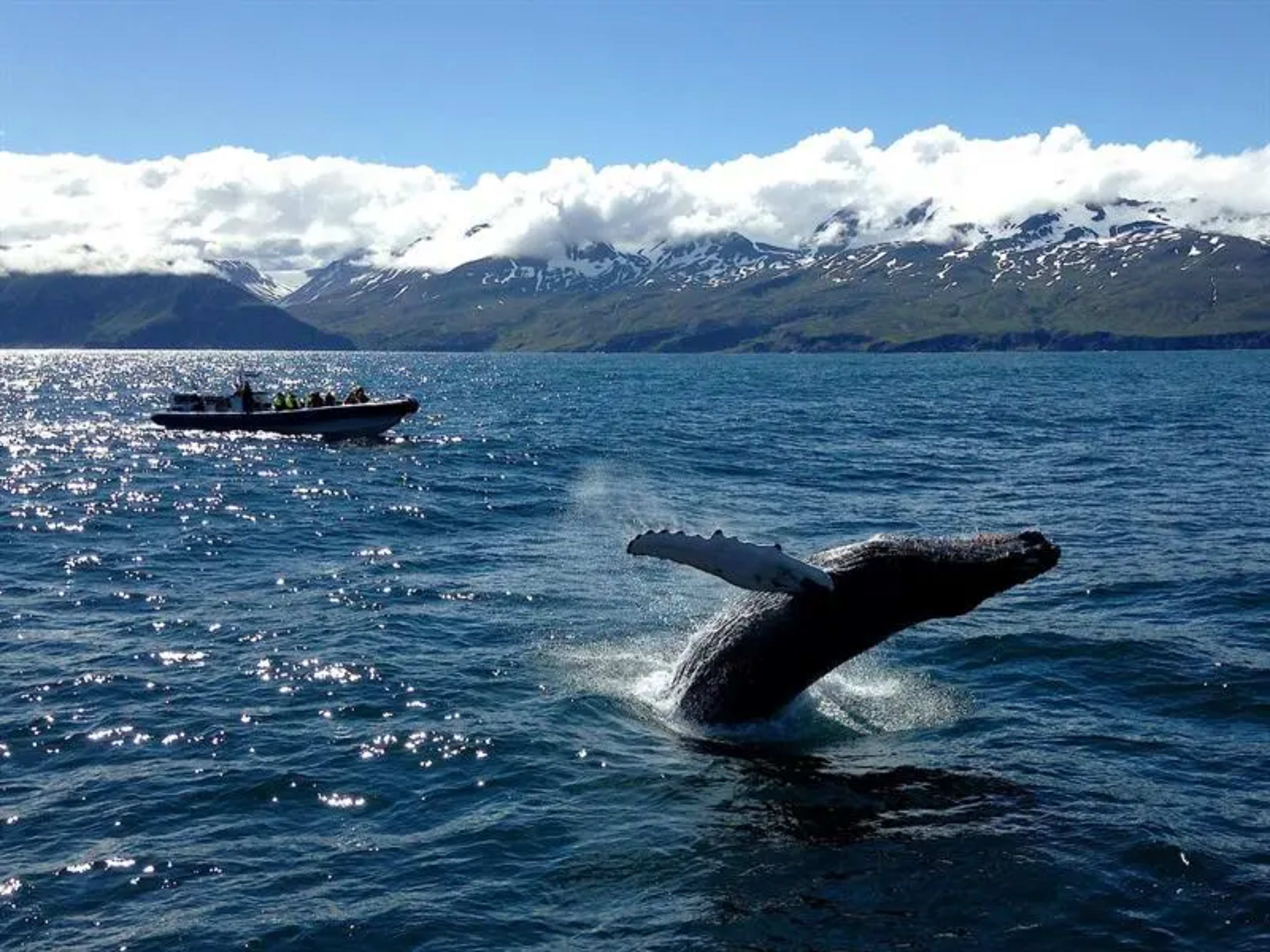
In winter, the conditions may be a bit choppier on the water. But it makes up for it with a different set of interesting wildlife to look out for and small groups on the boat. When there are whale sightings, this means you’ll have a great view to witness the beautiful sea creatures and take fantastic photos.
Another bonus of winter is the splendid snow-covered peaks as a backdrop. And do we even have to mention the Northern Lights?
So, what are the best months for whale watching in Iceland?
Generally speaking, we would recommend the summer months. June until August is a good period to see more whales and even puffins.
Tours are popular at this time, so if you want a bit more of the deck to yourself, try scheduling your trip for April, May, September, or October.
But if it’s your dream to see whales and you’re visiting Iceland in winter, don’t be put off by the conditions. Go on this memorable excursion!
Booking your whale watching tour
It’s easy to organize your whale watching excursion when you visit Iceland.
First, you’ll want to plan your trip to the Land of Fire and Ice. Whether you’re coming on a road trip, a city break, a camping adventure, or a private tour, you’ll find an itinerary that suits you on Iceland Tours.
Then you can add a whale watching cruise to your itinerary. We offer tours in both Reykjavík and Húsavík, so pick the one you prefer. Or both if you want to go all out!
Ready to plan? Browse our Iceland vacation packages to find your dream trip.

